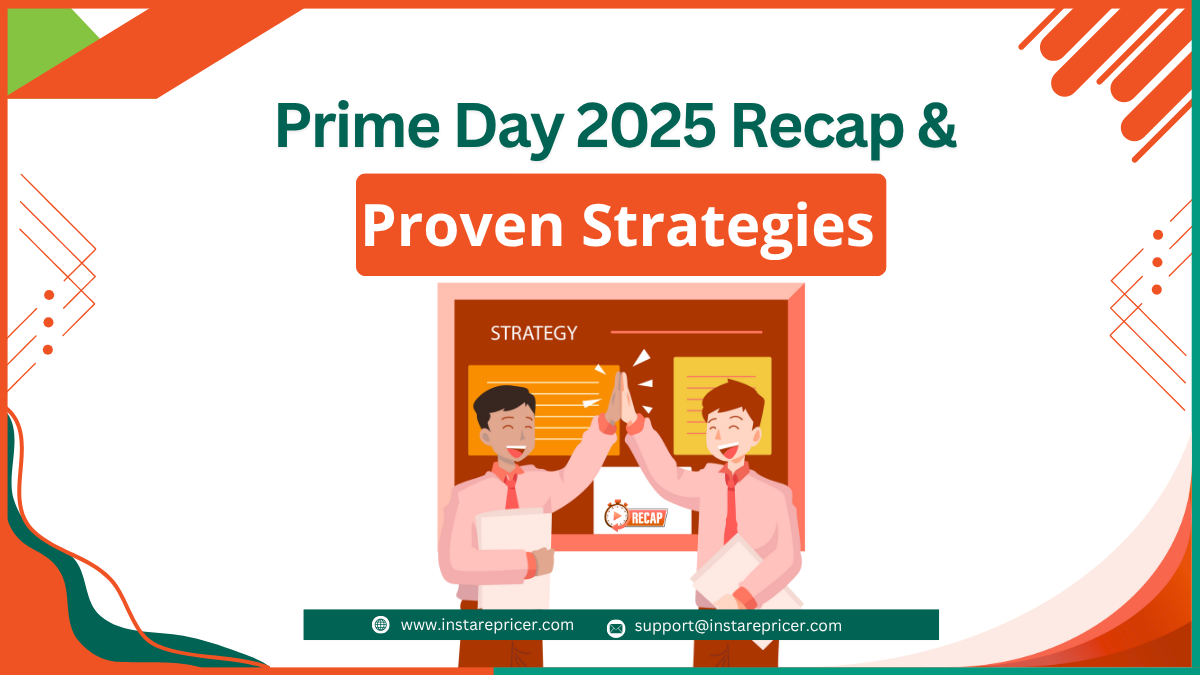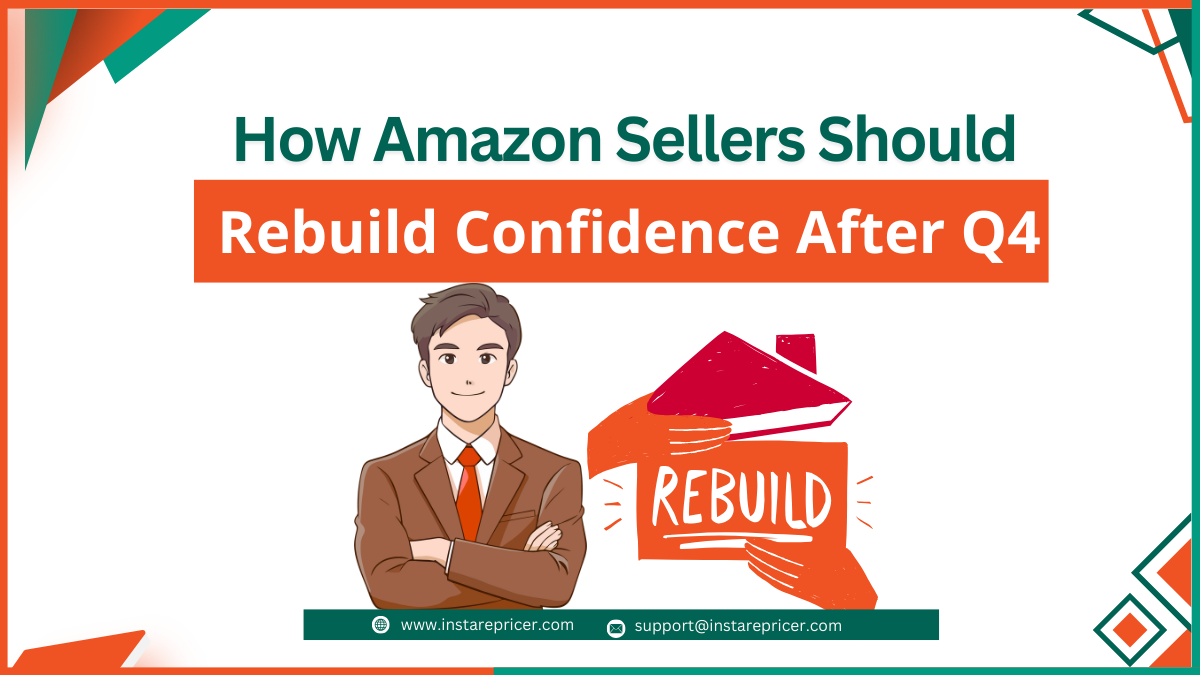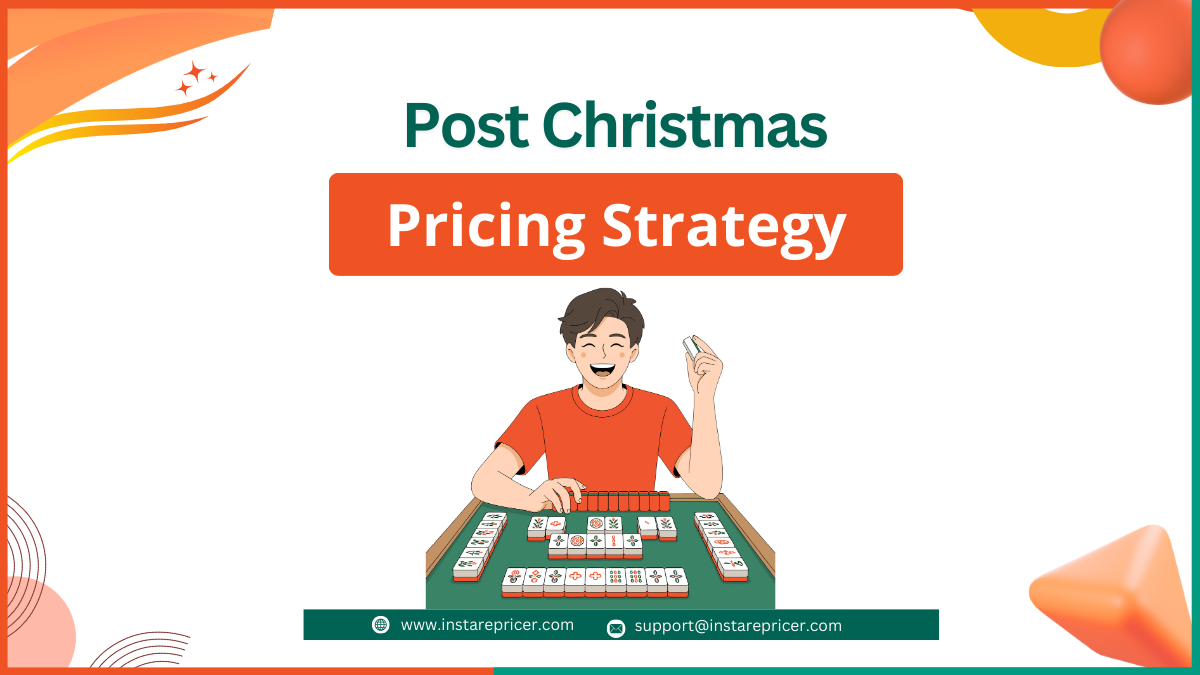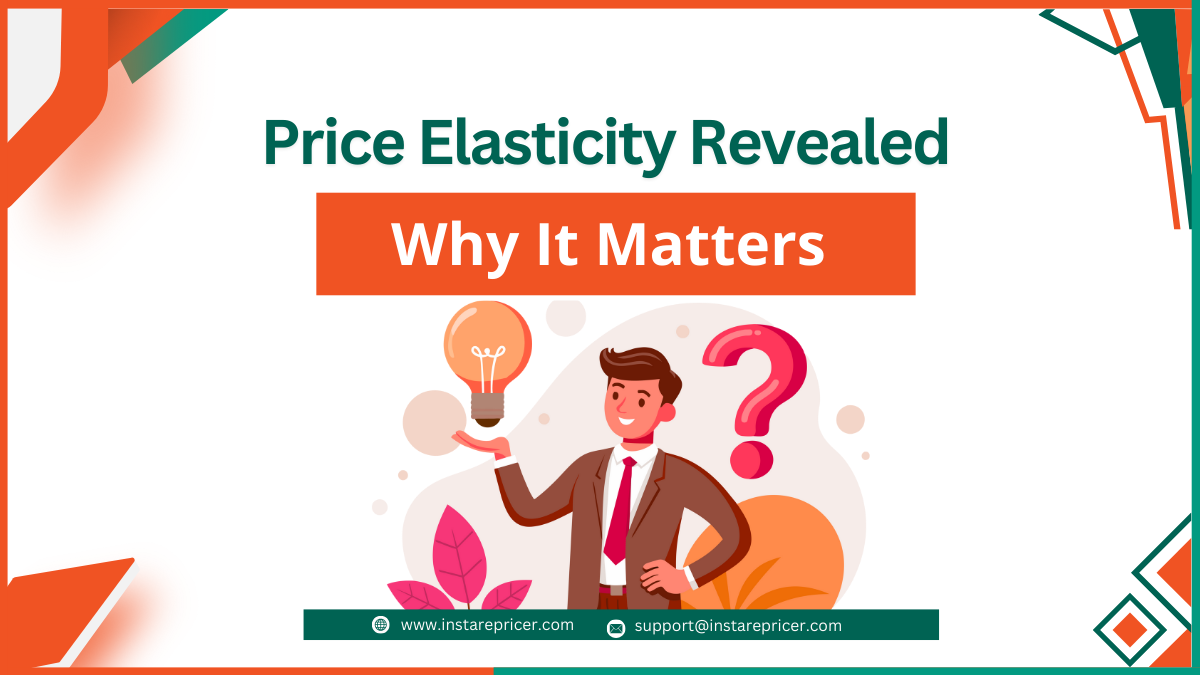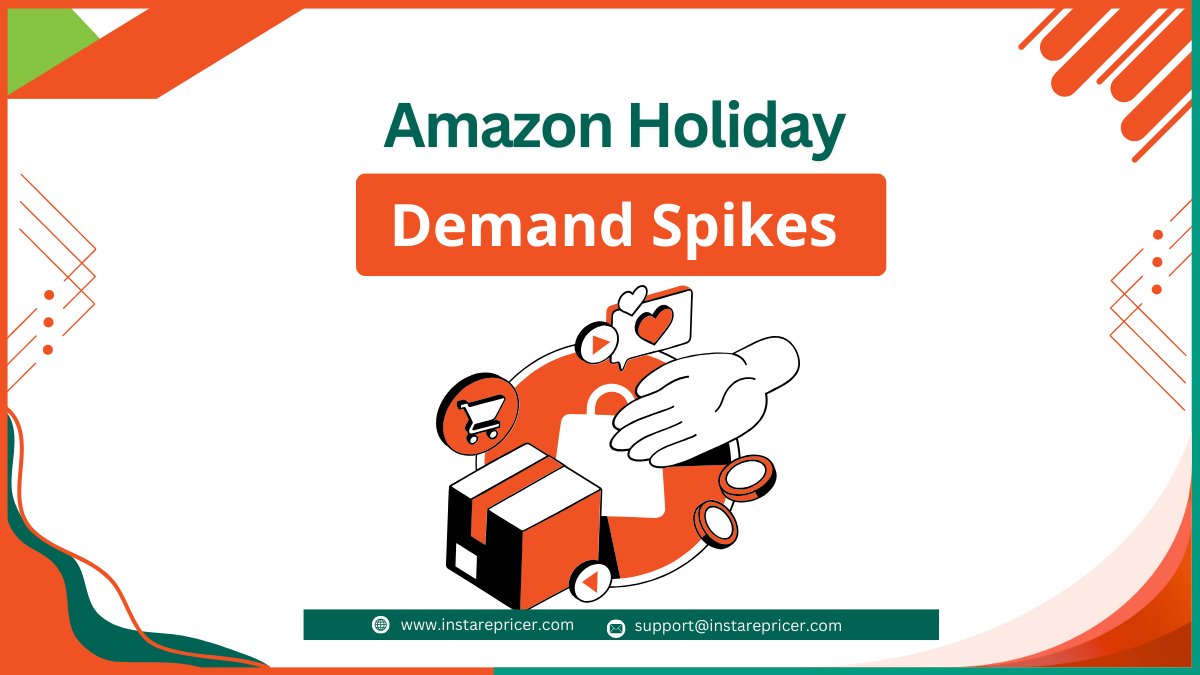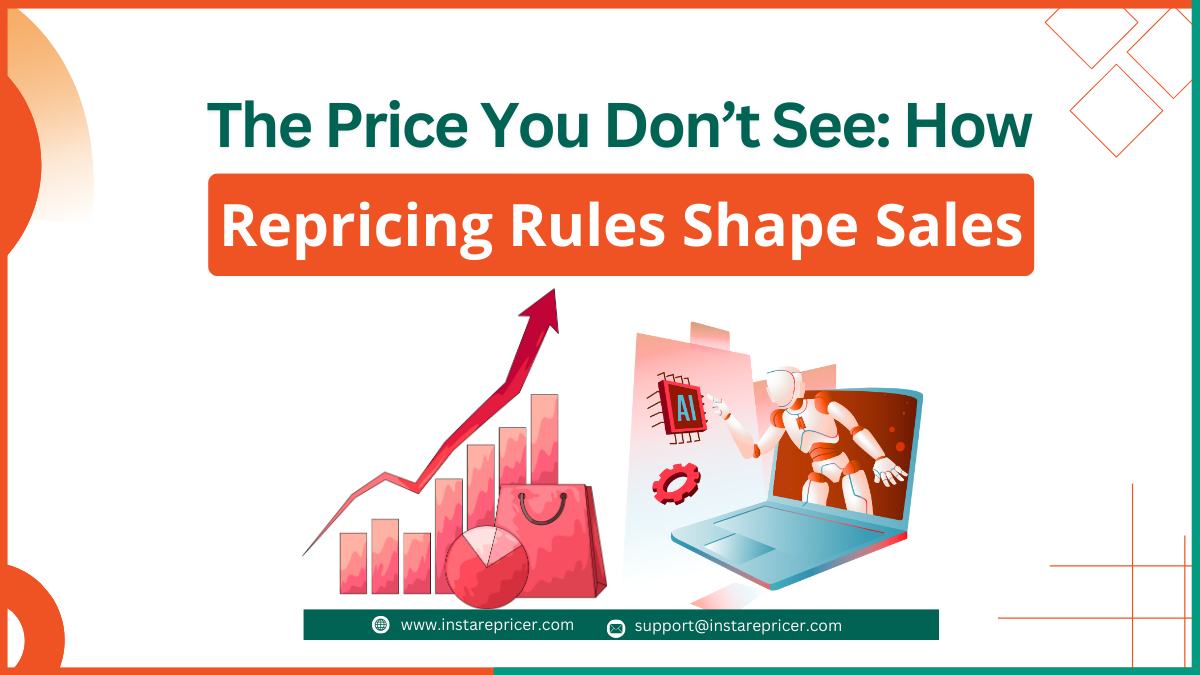Prime Day 2025 has wrapped up, and as always, we’re digging deep into the numbers to uncover insights sellers can use for Q4 and beyond. This year’s extended four-day format reshaped how brands approached ads, pricing, and inventory.
The results? A unique mix of AI-driven shopping, rising ad spend, and shifting buying patterns with plenty of opportunities for sellers who know how to adjust quickly.
Prime Day Results & Key Trends
Four Days of Prime: A First for Amazon Sellers
For the first time ever, Prime Day stretched across four full days, moving from a sprint to a marathon. This meant sellers had to rethink:
- Budget pacing to avoid burning out on Day 1.
- Dynamic repricing strategies to adapt to fluctuating competition.
- Inventory management to sustain deals across multiple days.
Here’s the ad spend trend sellers experienced:
| Day | Ad Spend Trend | Conversion Rate |
|---|---|---|
| Day 1 | High surge | Strong |
| Day 2 | Decline | Moderate |
| Day 3 | Decline | Moderate-low |
| Day 4 | Rebound (last-minute deals) | High |
Insight: Sellers using InstaRepricer were able to adjust prices in near real-time as demand shifted, keeping their listings competitive without racing to the bottom.
Ad Spend Rose Despite Tariff Pressures
Even with rising costs due to tariffs, brands increased ad investments to protect visibility and maximize the longer event window.
- Prime Day 2025 became less about short-term sales and more about brand visibility.
- Competitive sellers combined pricing automation with ad performance monitoring to stay visible and profitable.
Category Spotlight: Electronics Dominates
Electronics was the runaway leader, taking 5 of the top 10 search terms and generating the highest ROAS.
| Category | Prime Day ROAS |
|---|---|
| Electronics | 13.43 |
| Home & Kitchen | 8.21 |
| Beauty & Personal Care | 6.94 |
| Apparel & Fashion | 5.80 |
| Sports & Outdoors | 4.92 |
Takeaway: Electronics sellers who combined timed discounting with InstaRepricer’s AI-driven rules saw the best returns, avoiding the “set it and forget it” trap.
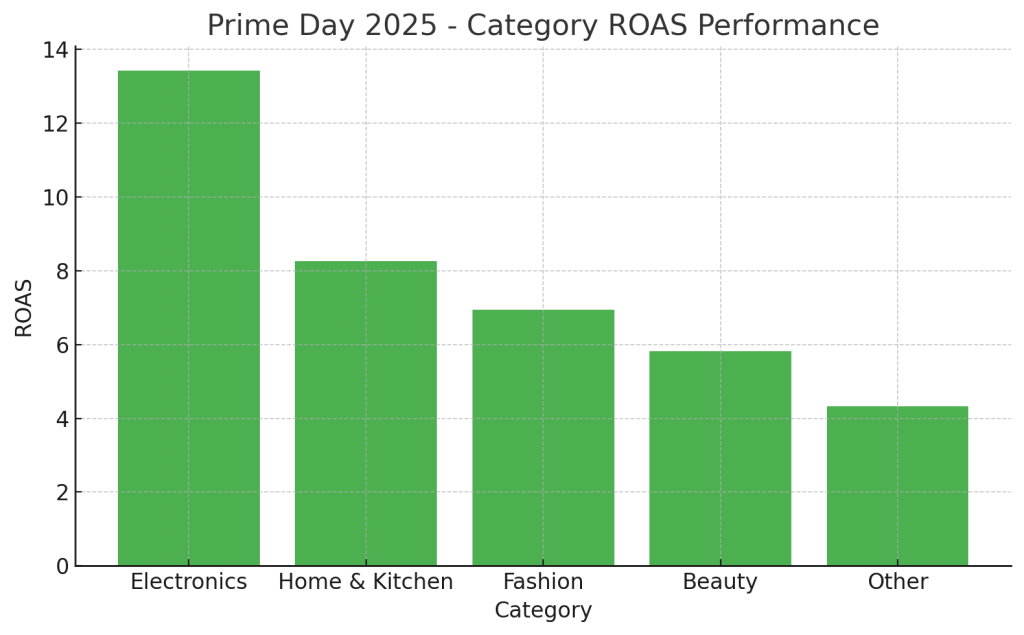
The Rise of Generative AI in E-Commerce
Prime Day 2025 saw a 3,300% YOY increase in shoppers using AI tools like ChatGPT and Perplexity for product searches instead of Google or Amazon search.
Example AI queries:
- “Best wireless earbuds under $50”
- “Top-rated air fryer for a family of four”
If your listings aren’t optimized for AI discovery, you risk missing a big share of future buyers. Dynamic pricing and keyword-rich content together will be crucial.
Influencer Marketing Still Converts
Despite AI growth, influencer-driven sales made up 19% of U.S. Prime Day purchases.
Smart sellers are blending:
- AI-powered pricing adjustments (InstaRepricer)
- Authentic influencer partnerships
- Coordinated ad campaigns
Post-Prime Day: How to Keep the Momentum
1. Review and Analyze Data
Use Amazon Brand Analytics to identify:
- Top-performing ASINs
- Best-converting keywords
- Customer segments that responded well
2. Retarget High-Intent Shoppers
Run Sponsored Display or DSP campaigns for:
- Viewers who didn’t purchase
- Cart abandoners
3. Reassess Inventory for Q4
Factor in:
- Prime Day sales velocity
- Supply chain delays
- Tariff price impacts
4. Optimize Listings with Customer Feedback
Update:
- Titles & bullet points
- Images & A+ content
- Pricing rules in InstaRepricer based on competitor trends
5. Study Competitors
See:
- Who owned top-of-search
- Which bundles converted
- How they used urgency in pricing
6. Start Holiday Prep Early
Test creatives, validate audiences, and run micro-promotions now.
Why InstaRepricer is Your Post-Prime Day Secret Weapon
Prime Day’s extended format proved one thing static pricing loses money. InstaRepricer’s rules-based system lets you:
- Adjust prices instantly based on Buy Box competition, inventory levels, and profit margins.
- Avoid unnecessary price drops that kill margins.
- Sync with your ad strategy for maximum visibility and profitability.
By Q4, sellers who integrate repricing automation into their holiday playbook will have a clear competitive edge.

